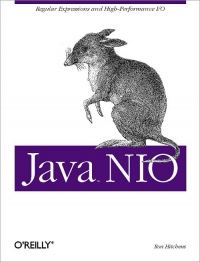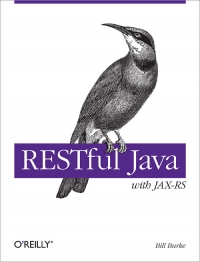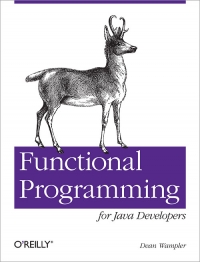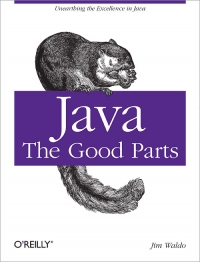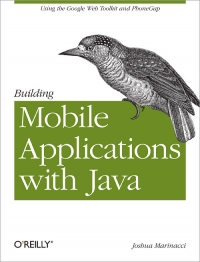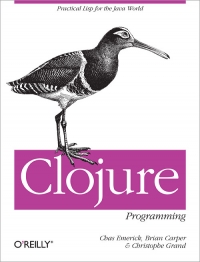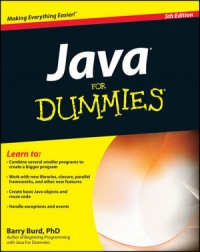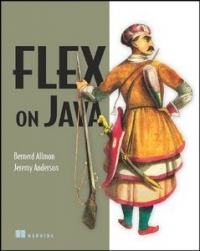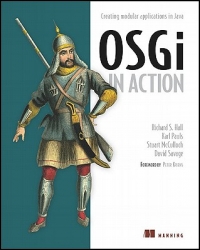Java NIO
Many serious Java programmers, especially enterprise Java programmers, consider the new I/O API - called NIO for New Input/Output - the most important feature in the 1.4 version of the Java 2 Standard Edition. The NIO package includes many things that have been missing from previous editions of Java that are critical to writing high-performance, large-scale applications: improvements in the areas of buffer management, scalable network and file I/O, character-set support, and regular expression matching. Most of all, it boosts performance and speed dramatically. Java NIO explores the new I/O capabilities of version 1.4 in detail and shows you how to put these features to work to greatly improve the efficiency of the Java code you write. This compact volume examines the typical challenges that Java programmers face with I/O and shows you how to take advantage of the capabilities of the new I/O features. You?ll learn how to put these tools to work using examples of common, real-world I ...
Many serious Java programmers, especially enterprise Java programmers, consider the new I/O API - called NIO for New Input/Output - the most important feature in the 1.4 version of the Java 2 Standard Edition. The NIO package includes many things that have been missing from previous editions of Java that are critical to writing high-performance, large-scale applications: improvements in the areas of buffer management, scalable network and file I/O, character-set support, and regular expression matching. Most of all, it boosts performance and speed dramatically. Java NIO explores the new I/O capabilities of version 1.4 in detail and shows you how to put these features to work to greatly improve the efficiency of the Java code you write. This compact volume examines the typical challenges that Java programmers face with I/O and shows you how to take advantage of the capabilities of the new I/O features. You?ll learn how to put these tools to work using examples of common, real-world I ...
RESTful Java with JAX-RS
Learn how to design and develop distributed web services in Java using RESTful architectural principals and the JAX-RS specification in Java EE 6. With this hands-on reference, you'll focus on implementation rather than theory, and discover why the RESTful method is far better than technologies like CORBA and SOAP. It's easy to get started with services based on the REST architecture. RESTful Java with JAX-RS includes a technical guide that explains REST and JAX-RS, how they work, and when to use them. With the RESTEasy workbook that follows, you get step-by-step instructions for installing, configuring, and running several working JAX-RS examples using the JBoss RESTEasy implementation of JAX-RS. ...
Learn how to design and develop distributed web services in Java using RESTful architectural principals and the JAX-RS specification in Java EE 6. With this hands-on reference, you'll focus on implementation rather than theory, and discover why the RESTful method is far better than technologies like CORBA and SOAP. It's easy to get started with services based on the REST architecture. RESTful Java with JAX-RS includes a technical guide that explains REST and JAX-RS, how they work, and when to use them. With the RESTEasy workbook that follows, you get step-by-step instructions for installing, configuring, and running several working JAX-RS examples using the JBoss RESTEasy implementation of JAX-RS. ...
Functional Programming for Java Developers
Software development today is embracing functional programming (FP), whether it's for writing concurrent programs or for managing Big Data. Where does that leave Java developers? This concise book offers a pragmatic, approachable introduction to FP for Java developers or anyone who uses an object-oriented language. Dean Wampler, Java expert and author of Programming Scala (O'Reilly), shows you how to apply FP principles such as immutability, avoidance of side-effects, and higher-order functions to your Java code. Each chapter provides exercises to help you practice what you've learned. Once you grasp the benefits of functional programming, you'll discover that it improves all of the code you write. ...
Software development today is embracing functional programming (FP), whether it's for writing concurrent programs or for managing Big Data. Where does that leave Java developers? This concise book offers a pragmatic, approachable introduction to FP for Java developers or anyone who uses an object-oriented language. Dean Wampler, Java expert and author of Programming Scala (O'Reilly), shows you how to apply FP principles such as immutability, avoidance of side-effects, and higher-order functions to your Java code. Each chapter provides exercises to help you practice what you've learned. Once you grasp the benefits of functional programming, you'll discover that it improves all of the code you write. ...
Java: The Good Parts
What if you could condense Java down to its very best features and build better applications with that simpler version? In this book, veteran Sun Labs engineer Jim Waldo reveals which parts of Java are most useful, and why those features make Java among the best programming languages available. Every language eventually builds up crud, Java included. The core language has become increasingly large and complex, and the libraries associated with it have grown even more. Learn how to take advantage of Java's best features by working with an example application throughout the book. You may not like some of the features Jim Waldo considers good, but they'll actually help you write better code. ...
What if you could condense Java down to its very best features and build better applications with that simpler version? In this book, veteran Sun Labs engineer Jim Waldo reveals which parts of Java are most useful, and why those features make Java among the best programming languages available. Every language eventually builds up crud, Java included. The core language has become increasingly large and complex, and the libraries associated with it have grown even more. Learn how to take advantage of Java's best features by working with an example application throughout the book. You may not like some of the features Jim Waldo considers good, but they'll actually help you write better code. ...
Java and Mac OS X
Learn the guidelines of integrating Java with native Mac OS X applications with this Devloper Reference book. Java is used to create nearly every type of application that exists and is one of the most required skills of employers seeking computer programmers. Java code and its libraries can be integrated with Mac OS X features, and this book shows you how to do just that. ...
Learn the guidelines of integrating Java with native Mac OS X applications with this Devloper Reference book. Java is used to create nearly every type of application that exists and is one of the most required skills of employers seeking computer programmers. Java code and its libraries can be integrated with Mac OS X features, and this book shows you how to do just that. ...
Building Mobile Applications with Java
Do you want to develop mobile apps with Java - and have them work on a variety of devices powered by iOS and Android? You've come to the right place. This project-driven book shows you how to build portable apps with two amazing open source frameworks, Google Web Tools (GWT) and PhoneGap. With these tools, you'll use learn how to write Java code that compiles into cross-platform Javascript and HTML, and discover how to take advantage of features in several popular devices, such as the camera, accelerometer, and GPS. ...
Do you want to develop mobile apps with Java - and have them work on a variety of devices powered by iOS and Android? You've come to the right place. This project-driven book shows you how to build portable apps with two amazing open source frameworks, Google Web Tools (GWT) and PhoneGap. With these tools, you'll use learn how to write Java code that compiles into cross-platform Javascript and HTML, and discover how to take advantage of features in several popular devices, such as the camera, accelerometer, and GPS. ...
Clojure Programming
Clojure is a practical, general-purpose language that offers expressivity rivaling other dynamic languages like Ruby and Python, while seamlessly taking advantage of Java libraries, services, and all of the resources of the JVM ecosystem. This book helps you learn the fundamentals of Clojure with examples relating it to the languages you know already, in the domains and topics you work with every day. See how this JVM language can help eliminate unnecessary complexity from your programming practice and open up new options for solving the most challenging problems. ...
Clojure is a practical, general-purpose language that offers expressivity rivaling other dynamic languages like Ruby and Python, while seamlessly taking advantage of Java libraries, services, and all of the resources of the JVM ecosystem. This book helps you learn the fundamentals of Clojure with examples relating it to the languages you know already, in the domains and topics you work with every day. See how this JVM language can help eliminate unnecessary complexity from your programming practice and open up new options for solving the most challenging problems. ...
Java For Dummies, 5th Edition
Java is the platform-independent, object-oriented programming language used for developing web and mobile applications. The revised version offers new functionality and features that have programmers excited, and this popular guide covers them all. This book helps programmers create basic Java objects and learn when they can reuse existing code. It's just what inexperienced Java developers need to get going quickly with Java 2 Standard Edition 7.0 (J2SE 7.0) and Java Development Kit 7.0 (JDK 7). ...
Java is the platform-independent, object-oriented programming language used for developing web and mobile applications. The revised version offers new functionality and features that have programmers excited, and this popular guide covers them all. This book helps programmers create basic Java objects and learn when they can reuse existing code. It's just what inexperienced Java developers need to get going quickly with Java 2 Standard Edition 7.0 (J2SE 7.0) and Java Development Kit 7.0 (JDK 7). ...
Flex on Java
Together, Flex and Java make a powerful web development platform - they blend the strengths of Java on the server with the richness of Flex on the frontend. Flex on Java is a unique book that teaches you how to work with Flex in concert with the full array of Java technologies: Spring, POJOs, JMS, and other standard tools. You also learn how to integrate Flex with server-side Java via BlazeDS remoting. Almost all the carefully annotated examples use free or open source software. ...
Together, Flex and Java make a powerful web development platform - they blend the strengths of Java on the server with the richness of Flex on the frontend. Flex on Java is a unique book that teaches you how to work with Flex in concert with the full array of Java technologies: Spring, POJOs, JMS, and other standard tools. You also learn how to integrate Flex with server-side Java via BlazeDS remoting. Almost all the carefully annotated examples use free or open source software. ...
OSGi in Action
OSGi is a Java-based framework for creating applications as a set of interconnected modules. OSGi lets you install, start, stop, update, or uninstall modules at execution time without taking down your entire system. It's the backbone of the Eclipse plugin system, as well as many Java EE containers, such as GlassFish, Geronimo, and WebSphere. OSGi in Action provides a clear introduction to OSGi concepts with examples that are relevant both for architects and developers. You'll start with the central ideas of OSGi: bundles, module lifecycles, and interaction among application components. With the core concepts well in hand, you'll explore numerous application scenarios and techniques. You'll learn how to migrate legacy systems to OSGi and how to test, debug, and manage applications. ...
OSGi is a Java-based framework for creating applications as a set of interconnected modules. OSGi lets you install, start, stop, update, or uninstall modules at execution time without taking down your entire system. It's the backbone of the Eclipse plugin system, as well as many Java EE containers, such as GlassFish, Geronimo, and WebSphere. OSGi in Action provides a clear introduction to OSGi concepts with examples that are relevant both for architects and developers. You'll start with the central ideas of OSGi: bundles, module lifecycles, and interaction among application components. With the core concepts well in hand, you'll explore numerous application scenarios and techniques. You'll learn how to migrate legacy systems to OSGi and how to test, debug, and manage applications. ...
